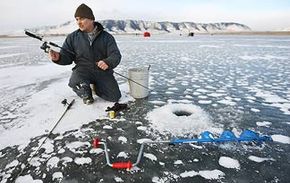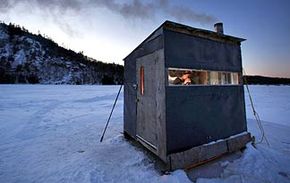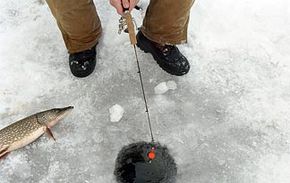PROFILE OF AN ICE FISHERMAN
There's no standard rule of thumb for what kind of person might undertake the sport of ice fishing, aside from being able to deal with bitterly cold weather. For the most part, what sets ice fishermen apart is where they choose to "cut their hole." In the United States, it's a social sport. Temporary fishing huts are assembled en masse, resembling a small shantytown on a frozen lake bed. Heaters and chairs are set up, the bottle is passed, stories are told and eventually some fish get caught. In Finland, you're more likely to see the solitary fisherman braving the elements fully exposed with a turned over plastic bucket as a seat.
But there are two things common to all ice fishermen -- patience and a resistance to biting, cold weather. Even though a permanent ice fishing shelter might have padded chairs, a heater and satellite television, it's not exactly a comfort sport when you're fishing in subzero temperatures. When most fishermen put the rod and reel in the closet for the winter, ice fishermen haul out the auger and gear for a chilling adventure.
Advertisement
Ice fishing has also changed a lot over the years. Although it's a fun time (for them) to set up shop and warm the belly with whiskey, waiting for the fish to swim by, modern ice fishermen move around the lake quite a bit in search of the catch. Some fishermen have been known to drill as many as 100 holes or more per day trying to locate the fish. Popular most anywhere there's a long and brutal winter, ice fishing is most common in the United States, Canada, Finland, Norway, Latvia, Poland, Russia, Sweden and Ukraine.
Advertisement


